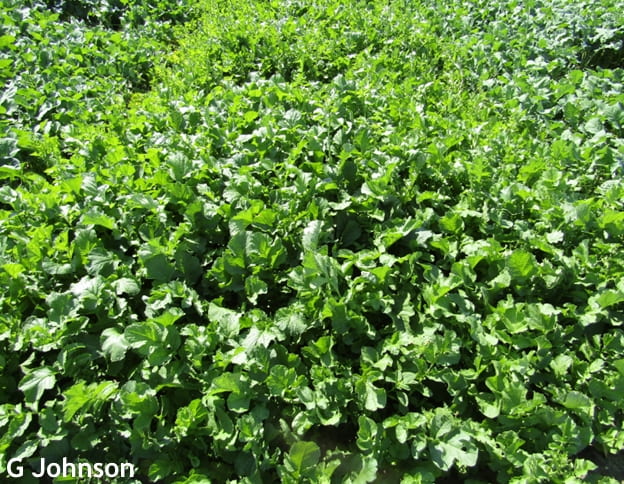Gordon Johnson, Extension Vegetable & Fruit Specialist; gcjohn@udel.edu
One principle of managing soil for improved health is to always have a crop growing on the soil. This will maintain or add organic matter, provide benefits from the action of growing roots, and recycle nutrients.
Where fall cover crops were not planted due to late harvest, spring cover crops can be planted in early April to provide soil health benefits where vegetables and field crops are not scheduled until late May or the month of June.
The most common cover crop options for late March or early April planting include spring oats, mustards and annual ryegrass. Plant oats at 90-120 lbs per acre, mustards at 10-20 lbs per acre, and annual ryegrass at 20-30 lbs per acre.
Field peas are another option; however, we are somewhat south of the best zone for spring planting. One type of field pea is the winter pea which is often fall planted in our area but can be spring planted. It has smaller seed so the seeding rate is 30-60 lbs per acre. Canadian or spring field peas are larger seeded and used as a spring cover crop planted alone at 120-140 lb/A.
Mixtures can also be used. Field peas are well adapted to mixing with spring oats or with annual ryegrass. Reduce seeding rates of each component when using in mixtures. Recommended seeding rates are 70 lbs of oats per acre and 40 lbs/A of Austrian winter peas or 80 lbs/A of Canadian or spring field peas.
Many mustard family crops have biofumigation potential. When allowed to grow to early flower stage and then incorporated into the soil, they release compounds that act as natural fumigants, reducing soil borne disease organisms. Some biofumigant mustard varieties and blends include ‘Pacific Gold’, ‘Idagold’, ‘Caliente’, ‘Trifecta’, and ‘Kodiak’. Other mustard family crops serve as non-hosts, trap crops, or deterrents for pests. In research at the University of Delaware biofumigation using early spring planted biofumigant crops such as ‘Image’ radish, ‘Dwarf Essex’ rapeseed, or ‘Nemat’ arugula showed potential for managing root knot nematode populations. When used as a biofumigant, mustard family cover crops should be grown to achieve maximum biomass by adding 60-100 lbs of nitrogen per acre. Nitrogen is also required to produce high biomass with spring oats and annual ryegrass at similar rates. When planting mixtures with peas, nitrogen rates should be reduced.
An often-forgotten spring seeded legume crop that can also be used is red clover. Red clover can be frost seeded into small grains, seeded alone, or mixed with spring oats or annual ryegrass. Seeding rates for pure stands would be 10-16 lbs/A, for mixtures 6-10 lbs/A.

Spring planted radishes and mustards as cover crops.
